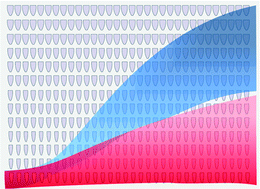Deformability based sorting of stored red blood cells reveals donor-dependent aging curves†
Abstract
A fundamental challenge in the transfusion of red blood cells (RBCs) is that a subset of donated RBC units may not provide optimal benefit to transfusion recipients. This variability stems from the inherent ability of donor RBCs to withstand the physical and chemical insults of cold storage, which ultimately dictate their survival in circulation. The loss of RBC deformability during cold storage is well-established and has been identified as a potential biomarker for the quality of donated RBCs. While RBC deformability has traditionally been indirectly inferred from rheological characteristics of the bulk suspension, there has been considerable interest in directly measuring the deformation of RBCs. Microfluidic technologies have enabled single cell measurement of RBC deformation but have not been able to consistently distinguish differences between RBCs between healthy donors. Using the microfluidic ratchet mechanism, we developed a method to sensitively and consistently analyze RBC deformability. We found that the aging curve of RBC deformability varies significantly across donors, but is consistent for each donor over multiple donations. Specifically, certain donors seem capable of providing RBCs that maintain their deformability during two weeks of cold storage in standard test tubes. The ability to distinguish between RBC units with different storage potential could provide a valuable opportunity to identify donors capable of providing RBCs that maintain their integrity, in order to reserve these units for sensitive transfusion recipients.



 Please wait while we load your content...
Please wait while we load your content...